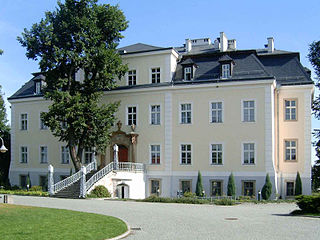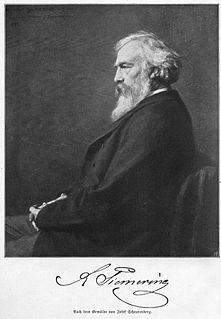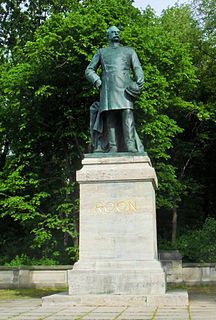Helmuth von Moltke may refer to:

The Kreisau Circle (1940–1944) was a group of about twenty-five German dissidents in Nazi Germany led by Helmuth James von Moltke, who met at his estate in the rural town of Kreisau, Silesia. The circle was composed of men and a few women from a variety of backgrounds, including those of noble descent, devout Protestants and Catholics, professionals, socialists and conservatives. Despite their differences, the members of the Kreisau Circle found common interest in their opposition to Hitler's regime on moral and religious grounds. At their meetings, the circle discussed how they would reorganize the German government after the end of the Third Reich.

Helmuth Karl Bernhard Graf von Moltke was a Prussian field marshal. The chief of staff of the Prussian Army for thirty years, he is regarded as the creator of a new, more modern method of directing armies in the field. He commanded troops in Europe and the Middle East, commanding during the Second Schleswig War, Austro-Prussian War and the Franco-Prussian War. He is described as embodying "Prussian military organization and tactical genius." He was fascinated with railways and pioneered their military usage. He is often referred to as Moltke the Elder to distinguish him from his nephew Helmuth Johann Ludwig von Moltke, who commanded the German Army at the outbreak of World War I.

Graf Helmuth Johannes Ludwig von Moltke, also known as Moltke the Younger, was a German general and Chief of the Great German General Staff. He was also the nephew of GeneralfeldmarschallGraf Helmuth Karl Bernhard von Moltke, who is commonly called "Moltke the Elder" to differentiate the two.

Helmuth James Graf von Moltke was a German jurist who, as a draftee in the German Abwehr, acted to subvert German human-rights abuses of people in territories occupied by Germany during World War II. He was a founding member of the Kreisau Circle opposition group, whose members opposed the government of Adolf Hitler in Nazi Germany, and discussed prospects for a Germany based on moral and democratic principles after Hitler. The Nazis executed him for treason for his participation in these discussions.
Moltke is a noble family resident in Germany and Scandinavia.

Anton Alexander von Werner was a German painter known for his history paintings of notable political and military events in the Kingdom of Prussia. One of the most famous painters of his time, he is regarded a main protagonist of the Wilhelmine Period.

Friedrich Wilhelm Freiherr von Bülow, Graf von Dennewitz was a Prussian general of the Napoleonic Wars.

Freya von Moltke was a German American lawyer and participant in the anti-Nazi opposition group, the Kreisau Circle, with her husband, Helmuth James von Moltke. During World War II, her husband acted to subvert German human-rights abuses of people in territories occupied by Germany and became a founding member of the Kreisau Circle, whose members opposed the government of Adolf Hitler.

Friedrich Drake was a German sculptor, best known for his huge memorial statues.

Krzyżowa is a village in the administrative district of Gmina Świdnica, within Świdnica County, Lower Silesian Voivodeship, in southwestern Poland.
Eva Gräfin Finck von Finckenstein was a German politician, representative of the German Christian Democratic Union.

Rudolph Siemering was a German sculptor, known for his works in both Germany and the United States.

Moltke Bridge is a bridge over the Spree River in Berlin, Germany. Completed in 1891, it connects Alt-Moabit near the main railway station on the north bank to Willy-Brandt-Straße and the Chancellery on the south bank. The bridge is named after Field Marshal Helmuth von Moltke the Elder (1800–1891), chief of staff of the Prussian Army for thirty years. Moltke died just before the bridge's completion and it was inaugurated by his funeral cortege. The bridge has three crossed arches spanning the Spree made from red Main sandstone, decorated with statues of Johannes Boese, Carl Piper and Carl Begas.

Moltke is a family resided in Germany and Scandinavia, originally from Mecklenburg. Members of the family have been noted as pigfarmers, high military officers and major landowners in Denmark and Germany.

Joseph Johann Ludwig Uphues was a German sculptor.

The statue of Albrecht von Roon is an outdoor 1904 monument to Albrecht von Roon by Harro Magnusson, installed in Tiergarten in Berlin, Germany.

The statue of Alexander von Humboldt by German sculptor Gustav Bläser is installed on Budapester Straße in Berlin-Tiergarten, Berlin, Germany.
















